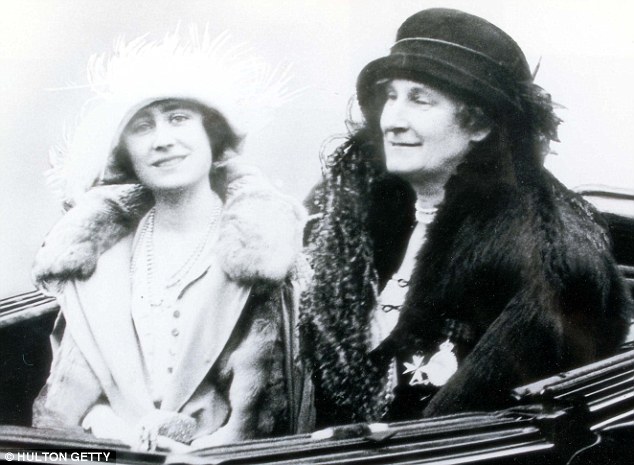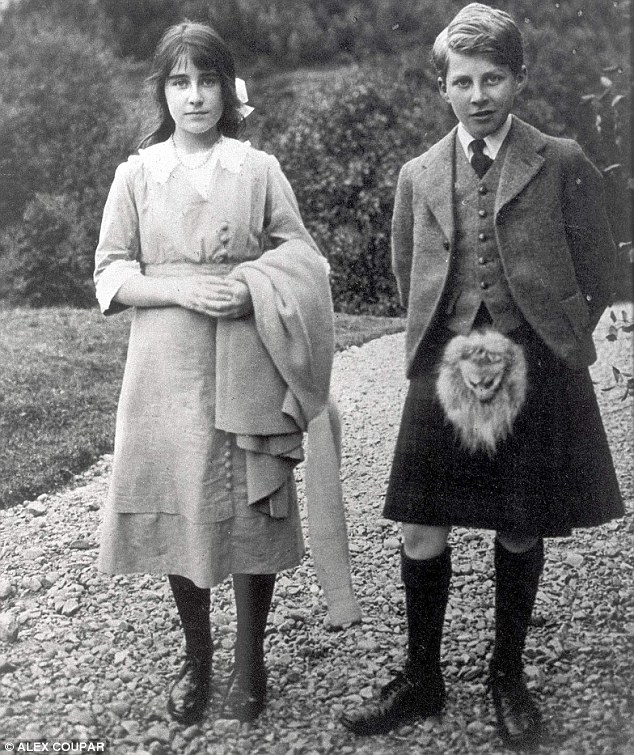Queen Mother’s real mother was her family’s French cook ...
the domestic help was ‘an early version of surrogacy’ for both
Elizabeth Bowes Lyon and her younger brother David.
The cook, an ‘attractive and pleasant Frenchwoman’ called
Marguerite Rodiere, gave birth to the future Queen Elizabeth
because her own mother Cecilia, who already had eight children,
was unable to have any more.

This explains the unflattering nickname ‘Cookie’ given to the

The Queen Mother's exact date of birth in August 1900 as the
fourth daughter of Lord Glamis, later 14th Earl of
Strathmore and Kinghorne, has always been disputed
It also remained unclear whether she was actually born in
the back of a London ambulance or the family home, St Paul’s
Waldenbury, in Hertfordshire.
Another puzzle has been why the Queen Mother, born the
Honourable Elizabeth Angela Marguerite Bowes Lyon, was given
a French middle name
The Queen Mother was the daughter of a Welsh maid who worked
in the family’s castle in Scotland.

Elizabeth with her brother in 1915.
Another puzzle has been why the Queen Mother, born the Honourable Elizabeth Angela Marguerite Bowes Lyon, was given a French middle name.
Royal and aristocratic circles had been alight for decades with the story that Elizabeth Bowes Lyon, while undoubtedly the daughter of the 14th Earl of Strathmore and Kinghorne, was not the child of his wife Cecilia, nor was her younger brother David, born nearly two years after her on 2nd May, 1902.
‘The two Benjamins, as they were known in the Bowes Lyon family (in a Biblical allusion to the brother of Joseph, who was himself the product of a coupling between his father and his mother’s maid) were supposedly the children of Marguerite Rodiere, an attractive and pleasant Frenchwoman who had been the cook at St Paul’s Waldenbury and is meant to have provided Lord and Lady Glamis with the two children they so yearned for after Cecilia was forbidden by her doctors from producing any more progeny.
‘Hence the nickname of Cookie, which the Duke and Duchess of Windsor took care to promulgate throughout international society once Elizabeth proved herself to be their most formidable enemy.’
Some people did know the truth surrounding the Queen Mother’s birth, chiefly her brother-in-law, David.
As King Edward VIII, David had access to all the information about Elizabeth’s secret which was not so secret in aristocratic and royal circles.
‘When he discovered, to his horror, that Elizabeth was actively scheming with his own courtiers to undermine his position as king and prevent him from marrying the woman he loved, he used the wealth of access at his disposal to circumvent his own private and deputy private secretaries and obtain sight of the documents, which confirmed that Elizabeth had been born, not of 4th August as supposed, but on 3rd August at St Paul’s Waldenbury to Marguerite Rodiere.’
‘The Duke of Windsor always maintained that he would never have revealed Elizabeth’s secret had he not discovered at the time of the Abdication Crisis, through Lord Beaverbrook, that Elizabeth was behind the rumour that Wallis (Simpson) had learnt secret sexual techniques in a bordello in China, and it was this which was the secret hold she had over King Edward VIII.
Once he knew this to be true, however, he felt justified in rumbling the sister-in-law who had a secret of her own, and one, moreover, which had in his view, more merit than the one she said about his beloved.’
That’s why thereafter, Elizabeth was known as Cookie.
For those who asked, why she was being called by that nickname, there was always a member of the Windsor circle willing and able to recount how the High and Mighty Princess Elizabeth, Queen of the United Kingdom and Northern Ireland, Empress of India, Queen of Canada, Australia, etc,etc, was not even legitimate, but the daughter of the 13th Earl of Strathmore and Kinghorne and St Paul’s Waldenbury cook,Mademoiselle Marguerite Rodiere.
Surrogacy and the upper classes
It was not unusual for the upper classes to use ‘surrogacy’
arrangements to create
large families.
In the days before antibiotics, child mortality rates were
high and sole male heirs stood a good chance of being killed
in a war.
It was important that aristocrats left a ‘spare heir or
two’, and sometimes enlisted the aid of their domestic
staff.
‘The grander the couple, the more likely that there was a
serious problem, for great estates were entailed upon the
title, meaning that a peer could not leave his property to
whom he pleased.
‘The aristocracy was filled with horror stories about widows
and daughters of great peers living in penury while some
distant cousin was lording it over them.’
George VI allegedly took offence to the growing friendship
between the young Princess Elizabeth and ‘Little Porchy’,
who later became Lord Carnarvon.
The King is alleged to have said: ‘Young Porchester is
charming, but there is no possibility of my condoning a
union between a daughter of mine and a butler’s son.’